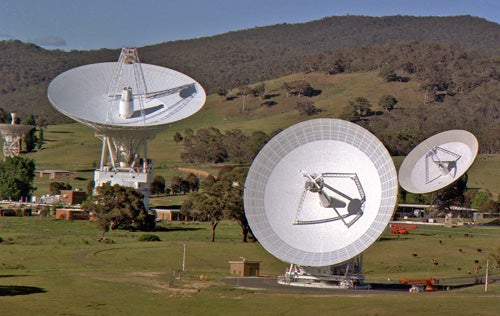Looking to the stars for growth, South Africa has submitted two bids on large NASA projects. The first, the Square Kilometre Array (SKA) radio telescope, which is sponsored by a consortium of 15 countries, will be the largest single astronomy venture the world has ever seen. This telescope will have a collecting area of 1 million square meters (1 square kilometer), by far the largest radio telescope ever built. Astronomers will probe the very beginning of the cosmos with this instrument.
Foreign investment in astronomy appears set to provide a major boost to South Africa’s economy over the next decade, says Deputy Science and Technology Minister Derek Hanekom. He said his department is promoting the country’s geographical location and advantages in an effort to attract large international science-based investment. Hanekom expects a decision on the SKA bid in late 2006.
In addition to SKA, Hanekom announced that NASA has expressed serious interest in building two large-dish antennae in South Africa as part of its Deep Space Array Network (DSAN). NASA has sent investigators to assess two possible sites near the Northern Cape towns of Springbok and Upington.
“What NASA actually wants is two sites that are close to each other, but with two different climatic zones, which is effectively what you have,” Hanekom said.
The DSAN will enhance the capabilities of NASA’s existing Deep Space Network (DSN), three antennae that support spacecraft missions and astronomical observations. The three deep-space communications facilities are located roughly 120° of longitude apart around the world. One is at Goldstone, in California’s Mojave Desert. A second was built near Madrid, Spain. The third lies outside Canberra, Australia.
The major competition for the DSAN facility is a second location in Spain. Hanekom said NASA will announce its decision within the next couple of months.










